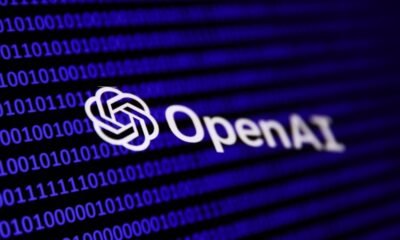Tools & Platforms
OpenAI’s $3 billion deal with AI coding startup Windsurf collapses, as Google swoops in for licensing deal

Google has struck a licensing deal with coding startup Windsurf, upending OpenAI’s $3 billion offer to acquire the startup after the clock on the deal’s exclusivity period expired.
The deal with Google means that Windsurf will continue to operate as an independent startup while key members of the team join Google, a source familiar with the matter told Fortune.
“We’re excited to welcome some top AI coding talent from Windsurf’s team to Google DeepMind to advance our work in agentic coding,” a Google spokesperson told Fortune in an emailed statement. The email also contained a statement from Windsurf founders Varun Mohan and Douglas Chen saying “We are excited to be joining Google DeepMind along with some of the Windsurf team.”
The news represents a setback for ChatGPT-maker OpenAI and comes as the generative AI startup has suffered talent raids from rivals like Meta. An OpenAI spokesperson confirmed to Fortune that the exclusivity period for the $3 billion acquisition deal with Windsurf, entered into in May, had expired, leaving Windsurf free to pursue other options.
AI coding startups, which use generative AI to assist programmers in writing code, have become one of the hottest categories in tech. Microsoft’s GitHub Copilot, built on OpenAI’s technology, has gained widespread adoption. In addition, Cursor, a startup backed by VCs like Thrive Capital, Accel, and Andreessen Horowitz, recently raised a $900 million Series C, hitting a $9 billion valuation.
Prior to making its bid for Windsurf, OpenAI had approached Anysphere about acquiring Cursor—but these discussions fell through as the startup wasn’t interested in being bought “even by OpenAI,” according to a report in TechCrunch.
Founded in 2021 by MIT classmates, and initially called Codeium, the startup changed its name to Windsurf in April, shortly before the OpenAI offer. The startup’s investors include Founders Fund, General Catalyst, Greenoaks, and Kleiner Perkins. TechCrunch reported in February that Windsurf was raising a funding round at a $2.85 billion valuation.
Tools & Platforms
Revealed: What our biggest companies worry about when it comes to AI – AFR
Tools & Platforms
Kakao CTO advocates treating AI as operating system, not model competition – 조선일보
Tools & Platforms
Google engineer releases free 400-page guide to agentic AI systems

A Google distinguished engineer has published a comprehensive 400-page technical guide to building autonomous AI systems, offering detailed blueprints for creating sophisticated artificial intelligence agents. Antonio Gulli, Senior Director and Distinguished Engineer in Google’s CTO Office, announced Agentic Design Patterns: A Hands-On Guide to Building Intelligent Systems with a scheduled release date of December 3, 2025.
The publication addresses a critical gap in AI development methodology. According to Gulli, building effective agentic systems requires more than just a powerful language model—it demands structured architectural blueprints. “It’s about moving from raw capability to robust, real-world applications,” Gulli stated in the book’s introduction.
Subscribe PPC Land newsletter ✉️ for similar stories like this one. Receive the news every day in your inbox. Free of ads. 10 USD per year.
The guide presents 21 distinct agentic patterns that serve as fundamental building blocks for autonomous AI systems. These patterns range from foundational concepts such as Prompt Chaining and Tool Use to advanced implementations including Multi-Agent Collaboration and Self-Correction frameworks. Each pattern represents a reusable solution to common challenges encountered when building intelligent, goal-oriented systems.
Technical specifications detailed in the book cover multiple implementation frameworks. The guide utilizes three prominent development platforms: LangChain and its extension LangGraph for building complex operational sequences, CrewAI for orchestrating multiple agents, and the Google Agent Developer Kit for evaluation and deployment processes. This multi-framework approach ensures broad applicability across different technical environments.
The publication structure follows a practical methodology. Each chapter focuses on a single agentic pattern, providing pattern overviews, use cases, hands-on code examples, and key takeaways. According to the table of contents, Part One covers 103 pages of core execution patterns including Prompt Chaining, Routing, Parallelization, Reflection, Tool Use, Planning, and Multi-Agent systems.
Part Two addresses 61 pages of memory management and learning capabilities. This section explores Memory Management, Learning and Adaptation, Model Context Protocol (MCP), and Goal Setting frameworks. The technical depth continues through Parts Three and Four, covering 114 pages of advanced topics including Exception Handling, Human-in-the-Loop patterns, Knowledge Retrieval, and Safety implementations.
Buy ads on PPC Land. PPC Land has standard and native ad formats via major DSPs and ad platforms like Google Ads. Via an auction CPM, you can reach industry professionals.
The book’s technical approach emphasizes practical implementation over theoretical discussion. According to the publication details, the guide includes executable code examples, architectural diagrams, and step-by-step implementation instructions. This hands-on methodology addresses the growing demand for actionable AI development resources in enterprise environments.
Industry validation for the guide emerged through social media discussions among AI practitioners. Multiple technology leaders shared positive assessments of the publication’s practical value. The book received recognition as a “#1 New Release in Probability & Statistics” on Amazon with a December 3, 2025 release date.
Gulli brings extensive technical credentials to the publication. His background includes over 30 years of relevant experience in AI, Search, and Cloud technologies. He holds a Ph.D. in Computer Science from the University of Pisa and has previously authored technical publications including “Deep Learning for Keras” across multiple editions and languages.
The economic context for agentic AI development shows significant market potential. Recent research published on PPC Land indicates Google Cloud projects the agentic AI market could reach $1 trillion by 2040, with 90% enterprise adoption expected. This projection reflects growing demand for autonomous AI systems capable of executing complex workflows with minimal human intervention.
The timing of Gulli’s publication coincides with increased industry focus on AI agent development. Major technology companies have recently released comprehensive AI agent guides, marking a shift toward more autonomous systems. Companies including Anthropic, OpenAI, and McKinsey have published complementary resources, though Gulli’s guide stands out for its comprehensive technical depth and practical implementation focus.
The book addresses critical challenges in AI agent reliability and safety. Traditional single-prompt interactions often prove insufficient for complex, multi-step tasks. Agentic patterns provide structured approaches to decomposing complex objectives into manageable components while maintaining coherence across extended workflows.
Pattern composition represents a key advancement outlined in the guide. The publication demonstrates how individual patterns combine to create sophisticated systems. For example, an autonomous research assistant might integrate Planning patterns for task decomposition, Tool Use for information gathering, Multi-Agent Collaboration for specialized analysis, and Reflection for quality assurance.
Memory Management patterns detailed in the book enable agents to maintain context across interactions while learning from experience. These capabilities distinguish true agentic systems from simple reactive models. The technical specifications include both short-term conversational context and long-term knowledge retention mechanisms.
Safety and alignment considerations receive dedicated coverage through specialized “Guardrails/Safety Patterns.” These frameworks address challenges of autonomous operation while maintaining alignment with intended objectives. The patterns include input validation, output filtering, human oversight integration, and graceful degradation capabilities.
The publication includes extensive technical documentation spanning 424 total pages. Appendices provide advanced prompting techniques, framework overviews, and implementation guidelines. A comprehensive glossary defines technical terms and concepts used throughout the guide.
Distribution of the guide follows open-access principles. Google has made the technical documentation publicly available through standard channels, enabling widespread practitioner access. This approach supports broader adoption of structured AI agent development methodologies across the industry.
Why this matters for marketing
The release of this comprehensive guide signals the maturation of agentic AI from experimental technology to practical implementation framework. For marketing professionals, these developments indicate significant opportunities for campaign automation and optimization capabilities that extend far beyond current programmatic advertising approaches.
The emergence of agentic AI capabilities in marketing contexts has already shown measurable impact, with AI search traffic converting at rates 23 times higher than traditional organic search visitors despite representing minimal traffic volume. This pattern suggests that AI-powered systems are fundamentally changing how users discover and interact with content.
Google’s recent introduction of automated calling features demonstrates practical agentic implementations in customer service contexts. The system autonomously contacts businesses to gather pricing and availability information on behalf of users, representing the type of goal-oriented behavior that Gulli’s patterns enable at scale.
The technical frameworks outlined in the guide provide marketing teams with structured approaches to building custom AI agents for campaign management, content optimization, and customer interaction automation. Rather than relying on black-box solutions, these patterns enable transparent, controllable implementations that align with specific business objectives.
Subscribe PPC Land newsletter ✉️ for similar stories like this one. Receive the news every day in your inbox. Free of ads. 10 USD per year.
Timeline
Subscribe PPC Land newsletter ✉️ for similar stories like this one. Receive the news every day in your inbox. Free of ads. 10 USD per year.
Summary
Who: Antonio Gulli, Senior Director and Distinguished Engineer in Google’s CTO Office, with over 30 years of experience in AI, Search, and Cloud technologies and a Ph.D. in Computer Science from the University of Pisa.
What: A comprehensive 400-page technical guide titled “Agentic Design Patterns: A Hands-On Guide to Building Intelligent Systems” that presents 21 distinct patterns for building autonomous AI agents, covering everything from basic prompt chaining to advanced multi-agent collaboration frameworks.
When: Announced with a scheduled release date of December 3, 2025, with the book being listed as a “#1 New Release in Probability & Statistics” on Amazon.
Where: Announced through multiple channels including social media and Amazon pre-orders, with Google making the technical documentation publicly available through standard distribution mechanisms.
Why: The guide addresses the critical gap between powerful language models and practical autonomous systems, providing structured architectural blueprints necessary for building reliable, goal-oriented AI agents that can operate with minimal human intervention in real-world applications.
-

 Business1 week ago
Business1 week agoThe Guardian view on Trump and the Fed: independence is no substitute for accountability | Editorial
-
Tools & Platforms4 weeks ago
Building Trust in Military AI Starts with Opening the Black Box – War on the Rocks
-

 Ethics & Policy1 month ago
Ethics & Policy1 month agoSDAIA Supports Saudi Arabia’s Leadership in Shaping Global AI Ethics, Policy, and Research – وكالة الأنباء السعودية
-

 Events & Conferences4 months ago
Events & Conferences4 months agoJourney to 1000 models: Scaling Instagram’s recommendation system
-

 Jobs & Careers2 months ago
Jobs & Careers2 months agoMumbai-based Perplexity Alternative Has 60k+ Users Without Funding
-

 Education2 months ago
Education2 months agoVEX Robotics launches AI-powered classroom robotics system
-

 Podcasts & Talks2 months ago
Podcasts & Talks2 months agoHappy 4th of July! 🎆 Made with Veo 3 in Gemini
-

 Education2 months ago
Education2 months agoMacron says UK and France have duty to tackle illegal migration ‘with humanity, solidarity and firmness’ – UK politics live | Politics
-

 Funding & Business2 months ago
Funding & Business2 months agoKayak and Expedia race to build AI travel agents that turn social posts into itineraries
-

 Podcasts & Talks2 months ago
Podcasts & Talks2 months agoOpenAI 🤝 @teamganassi




















